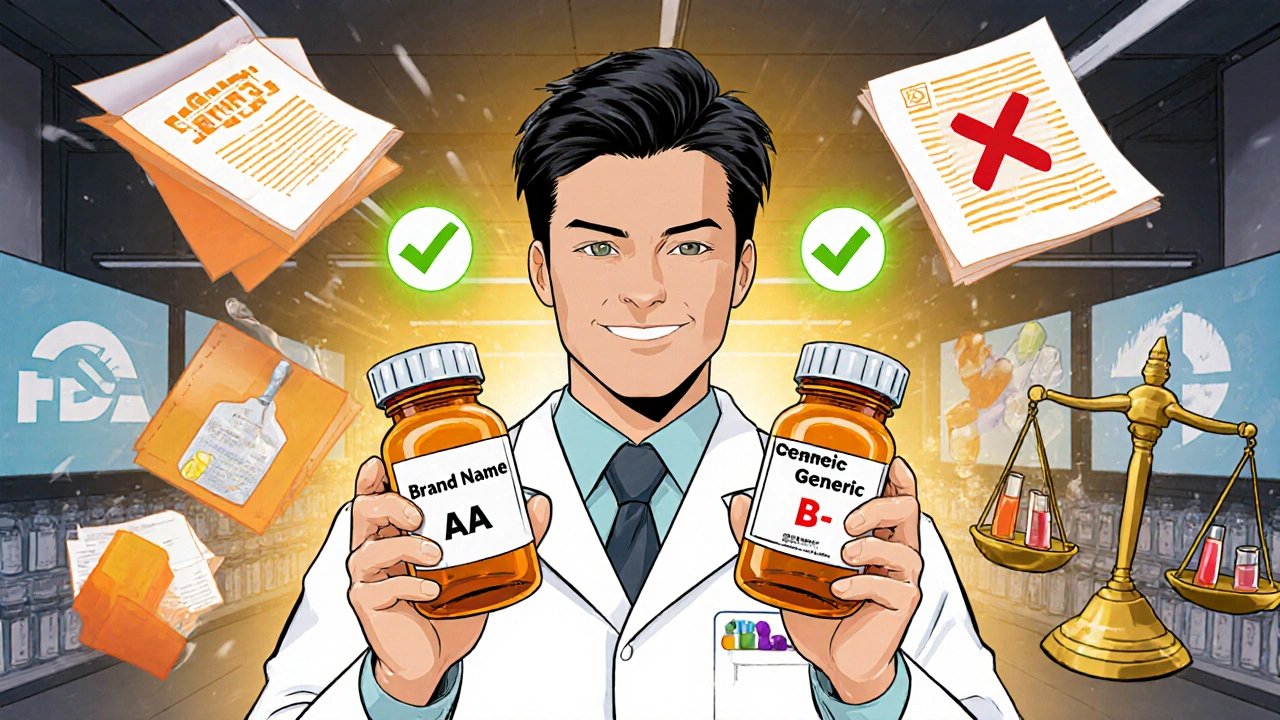Orange Book TE Codes: What They Mean and How They Affect Your Medications
When you pick up a generic pill, you might wonder if it’s really the same as the brand name. That’s where Orange Book TE codes, a system used by the U.S. Food and Drug Administration to rate therapeutic equivalence between brand and generic drugs. Also known as Therapeutic Equivalence codes, they’re the quiet rulebook behind whether your pharmacist can swap your prescription without asking your doctor. These codes aren’t just bureaucratic labels—they directly affect your treatment, your costs, and even your safety.
Think of TE codes like a traffic light for drug substitutions. An AB1 rating means the generic is bioequivalent and can be swapped freely. But if you see an BX, that’s a red flag: the generic isn’t considered interchangeable, often because its absorption varies too much. This matters most for drugs with narrow therapeutic windows—like warfarin, levothyroxine, or seizure meds—where even small differences can cause real problems. The FDA doesn’t assign these codes lightly. They test for active ingredient, strength, dosage form, route, and how fast the body absorbs the drug. It’s not enough for a generic to contain the same chemical; it has to perform the same way in your body.
These codes also connect to real-world decisions you see in posts about generic medications, lower-cost versions of brand-name drugs approved by the FDA as therapeutically equivalent, and why switching to them can save thousands over time. They’re why some pharmacies push 90-day supplies of generics, why insurance companies favor certain brands, and why your doctor might write "dispense as written" on a prescription. The FDA drug approvals, the official process by which the U.S. Food and Drug Administration evaluates and authorizes drugs for sale behind TE codes ensure that when you get a generic, you’re not getting a lesser version—you’re getting a verified, tested alternative. But not all generics are created equal, and the TE code tells you exactly where each one stands.
What you’ll find in the posts below are real examples of how these codes play out in daily care: from comparing hydrochlorothiazide alternatives to understanding why certain chemo drugs or blood pressure meds need extra caution when switching. You’ll see how generic cost savings don’t always mean automatic substitution—and why some patients need to stick with one brand for stability. These aren’t theoretical discussions. They’re based on what doctors actually do, what pharmacists see, and what patients experience when the system doesn’t always make sense.

FDA Therapeutic Equivalency Codes: How Laws Determine Which Generic Drugs Can Be Substituted
FDA Therapeutic Equivalency (TE) codes determine which generic drugs can legally be substituted for brand-name medications. Learn how these codes work, why some generics can't be swapped, and how state laws enforce substitution rules.